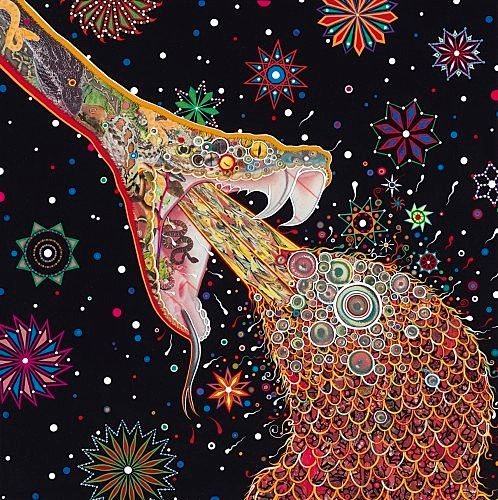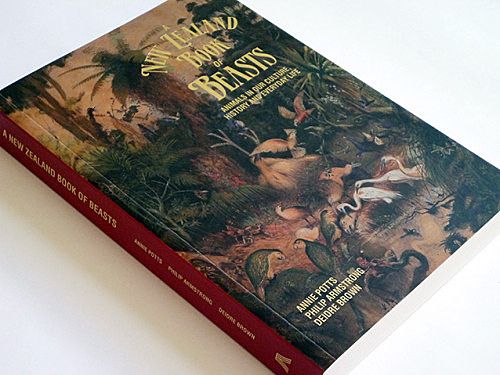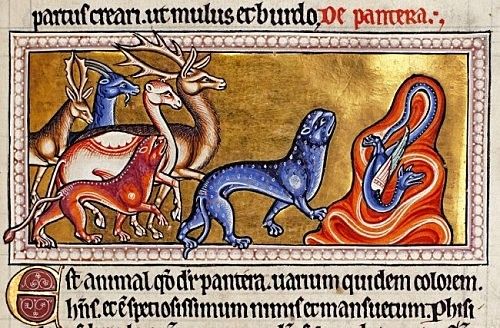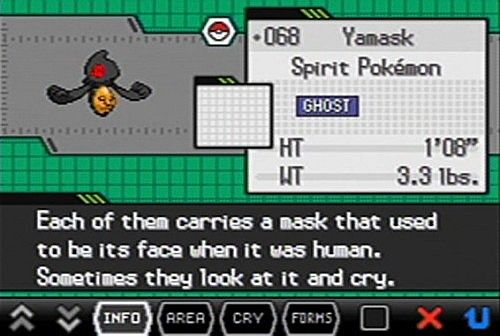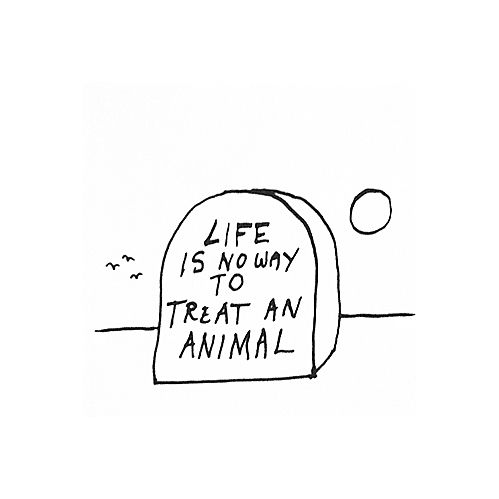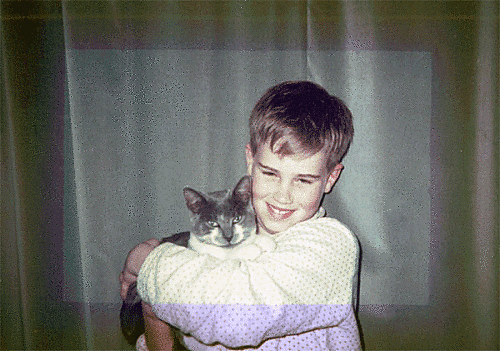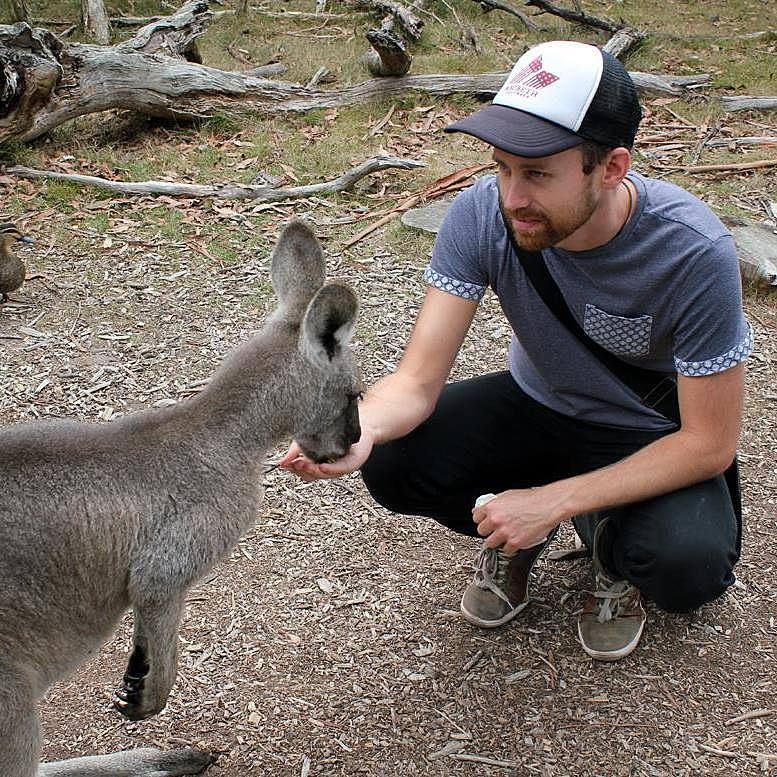We the Uncanny: Reading A New Zealand Book of Beasts
Published at the end of last year, 'A New Zealand Book of Beasts' explores the ways Kiwis think about kiwi, and many other creatures too. Using the book as a jumping-off point, Matt investigates how we use animals to think, and what that says about them - and us.
[caption id="attachment_9232" align="aligncenter" width="498"] Fred Tomaselli, 'Penetrators', 2012.[/caption]
It is written that animals are divided into: (a) those that belong to the emperor; (b) embalmed ones; (c) those that are trained; (d) suckling pigs; (e) sirens; (f) fabulous ones; (g) stray dogs; (h) those that are included in this classification; (i) those that tremble as if they were mad; (j) innumerable ones; (k) those drawn with a very fine camels-hair brush; (l) etcetera; (m) those that have just broken the flower vase; (n) those that at a distance resemble flies.
- Chinese Encyclopedia, Celestial Emporium of Benevolent Knowledge
On a summer’s afternoon in 1994, my mum finally caved and drove me to the SPCA to choose a kitten.
The layout of Mangere’s SPCA adoption centre – presumably still now, as then – is as follows: row upon row of changing-room sized enclosures, divided from one another and the gawking public by panes of glass or plastic. Within each are climbing toys, bowls of food and water, and soft things for animals to sleep on as they await human selection. I remember stalking between pens, examining litters of tiny mewling cats — many of them still nursing from their mothers or coiled up asleep, breathing fast in that way small animals do.
A couple of enclosures along there was a thunk, repeated again a moment later. I wandered over and peered through the thin glass divider. While a group of grey and white kittens were curled sleeping around their mum, one of their brothers had awkwardly climbed a scratching post and hurled himself at the glass that separated enclosures, trying to break through to the kittens he could see on the other side. He bounced off head first, spent a moment on the floor collecting himself and tried again. Again and again. This was either pluckiness or animal idiocy, determination or ignorance, curiosity or its polar opposite, a sort of dumb inability to learn. I made a value judgement, and with gleeful eight-year-old hubris, pointed at the small soft ball of grey fur and claimed him for myself. On the car ride home he shat everywhere.
A New Zealand Book of Beasts is a volume that aims to take decisions like the one I made and place them within a broader cultural context. If that mission statement sounds suspiciously academic, you ain’t wrong. It’s a book that’s more grad-school common room than coffee table, though for the most part the writing chugs along fairly smoothly, only occasionally lapsing into academese: “the human-ovine relationship is a dialectic,” apparently.
The book’s three authors – Philip Armstrong, Annie Potts and Deidre Brown – have between them written 11 chapters. Each deals with an aspect of New Zealand’s historical and contemporary view of animals: animals in literature, as pets, as pests, as food, as resources, and always, always as shibboleths for something deeper — the zeitgeist, avatars of atavism, a particular landscape or mode of living or structure of feeling. The best chapter comes towards the end, when Potts takes up the possum as the victim of an unjust smear campaign, and you can almost warm your hands over her simmering outrage, but this is a rare departure from a more placid narrative tone. The book’s unswerving objectivity is both its greatest strength and a source of weakness: it asks us to think rather than to feel, to take a step back and reflect rather than to cuddle or pet or poison. Ironically enough, this doesn’t come naturally.
I began reading half-expecting a reference guide or encyclopaedia to the types of bird endemic to our islands, but it’s not that. It’s a work of sociology best summed up by a sentence in its final chapter: the book is “a sequence of overlapping cultural histories of the relationships between humans and nonhuman animals in Aotearoa New Zealand.” Even if it weren’t any good, it’d be worth reading just for that little frisson reading ‘Aotearoa New Zealand’ in print engenders, I think. Fortunately, it also happens to be a very thorough, very serious look at a topic we all find fascinating: us.
Here begins the book of the nature of beasts,
Of lions and panthers and tigers,
wolves and foxes, dogs and apes.
- Aberdeen Bestiary
The book’s title is a sort of self-deprecating geeky joke, though the authors are never gauche enough to explain it as such. ‘Books of beasts’ or bestiaries have been kicking about since antiquity, gaining traction in the middle ages, waning with the Enlightenment, petering out in modernity. Many of them try to be comprehensive, but all of them are moralising: BEASTS were put on the EARTH by GOD in order to teach MAN by their ACTIONS important MORAL LESSONS. Writers of the time, not having access to Wikipedia or Google, conflated mythical creatures with actual ones. After all, what is a rhinoceros but an extremely fat unicorn? Da Vinci took a crack at writing such a tome in his old age, apparently realising that they were sort of ludicrous:
HYPOCRISY
The crocodile will seize a man and kill him immediately with his jaws. Then he will weep for him and wail in a mournful manner. When he has finished his lament, he will devour him cruelly. So it is with the hypocrite, who weeps when he is happy, showing a tearful countenance while in his ferocious heart he is rejoicing all the while.
- Selections from the Bestiary of Leonardo Da Vinci, Journal of American Folklore
Realistic portrayals of animals were secondary, especially when they got in the way of a good moral. Inventing imaginary beasts and then assigning them loaded moral valences is, of course, a practice popular culture has moved far beyond.
[caption id="attachment_9212" align="aligncenter" width="500"] Pokemon didn’t feature in ANZBoB, but if it had, this quote from the book might have been relevant: “The structures of thought and behaviour that comprise popular culture and everyday life are not shaped solely, and perhaps not even primarily, by rationality.”[/caption]
ANZBoB isn’t that kind of book: contra those earlier bestiaries, it insists it’s we, us humans, who project our own cultural codes out into nature. This is made explicit in the fact that such codes differ over time and between cultures. ANZBoB devotes considerable energy to tracing, for example, how the whale has changed symbolically: from ancestral guardian for pre-contact Maori to valuable resource for nineteenth-century Europeans to cause célèbre for the modern conservation movement. A pig is just a pig – unless it represents greed or filth or something darker, as in Lord of the Flies or Animal Farm. In a piece for Aeon Magazine, Mark Haddon – he wrote The Curious Incident of the Dog in the Night-time – once wrote:
Put an animal in a story and it is never just an animal. The faithful dog who waits for Odysseus’s return. The dove that brings the olive branch back to Noah. The sparrow that flies through the banqueting hall as you sit with your thanes and counsellors. Moby-Dick, War Horse. Animals aren’t tools for thinking. Animals are some of the basic building blocks of thought itself.
A New Zealand Book of Beasts works to make us realise how this transubstantiation occurs in New Zealand, on a farm or in an apartment block, a hundred years ago or today, in books and art and Department of Conservation brochures.
Our Book of Beasts does almost nothing to explain animals in the sort of terms we often hear nowadays: whales as intelligent and sensitive, corvids as cunning, dolphins as playful and cultured. In this sense, its unapologetic impartiality is entirely the point: it doesn’t care that the small differences between us and them are quietly eroded each year. It’s not important that cephalopods use tools, that rats transmit cultural knowledge between generations, that the great apes have theory of mind. Cognitive function is only the most recent metric against which we rank our fellow-creatures (maybe not coincidentally one of the few scales humans happen to top, hands-down). The point is we read animals and just as surely feel that spooky frisson of near-recognition as when we read ‘Aotearoa New Zealand’. “The animal,” our Book of Beasts declares, “is one group of symbolic objects that have over time and across cultures been useful as metaphors for a range of other objects.” An animal is never just an animal.
Animals represent, and we’re completely unable to make ourselves stop doing this to them. But do they represent because we can so clearly see into their intentionality, or because we can’t at all? Are they transparent, opaque or reflective? Often our over-eager imaginations are benign, as when I saw determination in my idiot kitten and took him home, saving him from euthanasia (and perhaps damning all his brothers and sisters in the process). Just as often, though, we get caught up in an overflow of self-made affect, and we look at animals and their actions in the same way we once looked to the sky and interpreted the movement of heavenly bodies as either auspicious or calamitous. Don’t kill an albatross, or let a black cat cross your path. Respect magnificent, predatory, potent animals, while those more rare lapse toward extinction: polar bears over kokako over amber snails, forever and always, amen. Animals are uncanny, because we see in them aspects of ourselves married to creatures that are not ourselves. A lion may be aggressive in a way that even the most imbrued cloudbank cannot be; a mouse might solve a maze for its own inscrutable purposes, in a way that exposes our most clever computer algorithms as empty programmed slaves.
Armstrong conceives it like this: “By thinking about animals, we define what it is to be human; we theorise about consciousness, rationality or agency; we embody masculinity, femininity, the material and the patriarchal; we decide what it is to be indigenous, to be Maori or Pakeha, to be a New Zealander.” We define, we decide, sure; but animals aren’t indigenous or native or foreign or invasive or cute or ugly or brave or reclusive or shy or aggressive or timid or bold: animals are merely alive, and to imagine we know more than that about their innate natures is to delude ourselves. We read intentionality into all things, but animals are not things. They are not glass-on-silver or tin-mercury amalgam: they are made of the same skin and hair and sinew that animates we who read about them. Considering animals mere automata, only responding to external events in their environments, when philosophers and neuroscientists can’t pin down what instigates human consciousness – well, that’s no better than presuming them animated by the divine will of God himself. They don’t just signify: they have agency of their own. Even the giant snails.
If this sounds like a criticism of A New Zealand Book of Beasts, it’s not. The authors of the book position animals with almost perfect objectivity: the focus is, always squarely, on the human reading of animals. You won’t discover many interesting animal facts by reading ANZBoB, but you will discover many interesting human facts (admittedly, these are not mutually exclusive). For example, New Zealand has the highest rate of animal ownership in the world. The first horse to come ashore from a ship in Wellington harbour was mistaken for a taniwha by local Maori, watching from the beach. The Maori word ‘mokai’ tellingly refers to human slaves and animal pets interchangeably. The years roll on, the interpretations change, but the animals themselves by and large remain the same.
The quote that opened this piece, from the Chinese Celestial Emporium, giving the absurd categories of animal: why are they so absurd? Are the non-scientific taxonomies we assign our fellow-creatures so rationally set in stone? Do the differences between pig and dog truly extend any further than their respective places at either end of the farmer’s command? We have such a shameful history of believing what we’re told without engaging that abstract faculty that’s apparently one of the few things left between us and the other great apes. That quote: it’s not Chinese at all, though it’s been repeated straight-facedly often enough by academics to lend it credibility. It was invented by the Latin American Jorge Luis Borges, who falsely attributed it to a German scholar who did indeed work on Chinese translations. It’s effective because it lives in the interstice between plausibility and prejudice; in this sense it behaves like the animals surrounding us, inscrutable and other — just familiar enough to reflect back at us our own certainties and biases, revealing nothing truly about anything except ourselves.
[caption id="attachment_9218" align="aligncenter" width="500"] Portrait of the young writer as cat-fancier[/caption]
Last winter that kitten I chose back in 1994 sat quietly watching low flames flicker in our living room’s open fireplace. He stood arthritically and slowly crept forward, a paw at a time: off the carpet and up onto the hearth, across the tiles and over the thick hot bars of the low iron grating, wet nose poking at the bright embers… mum leapt forward and grabbed him, moments from self-immolation.
His curious actions were the talk of the family for weeks: what would incite an otherwise well-balanced animal to attempt feline suicide? Had he grown tired of life? Twenty is stale and old and failing, for a cat.
I take a different view. Having watched those flames flicker through nineteen winters, I think his curiosity was at last sufficiently piqued, his courage sufficiently stoked, to attempt what you or I do when we pass a hand quickly through a candle’s flame. Fascinated by the glimmering yellow flickers of light, I prefer to think he was experimenting.
I don’t get to know whether my cat is dumb or demented or brave or suicidal, but I get to choose what I believe about him to be true. So long as we can’t keep ourselves from value judgements, we might at least choose ones that paint our fellow-creatures in a positive light; after all, to the extent that we look at them and decide to put them in cages or back yards or nature reserves or on the table, that we term them virtuous or dirty or halal, that we preserve or persecute or pet — to that extent, we look at them, and we see ourselves reflected back.

